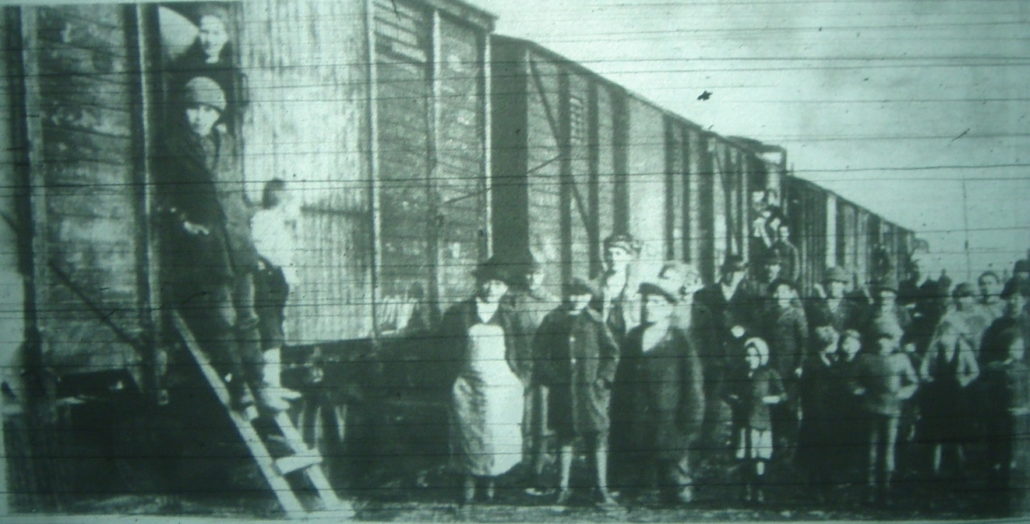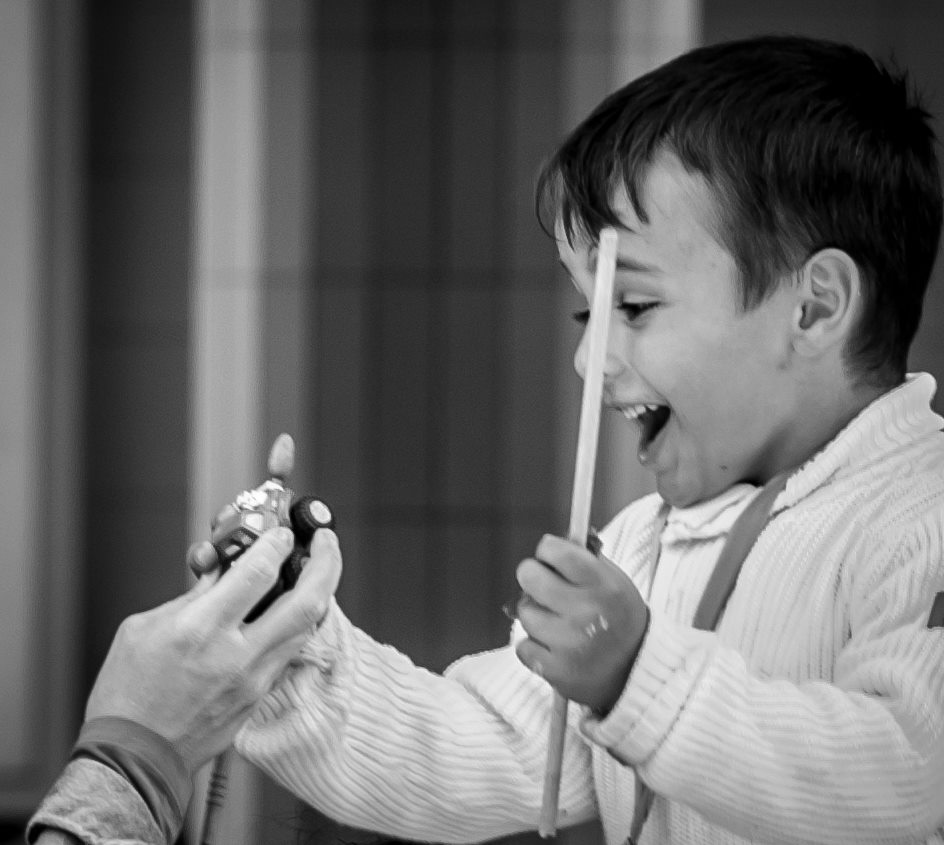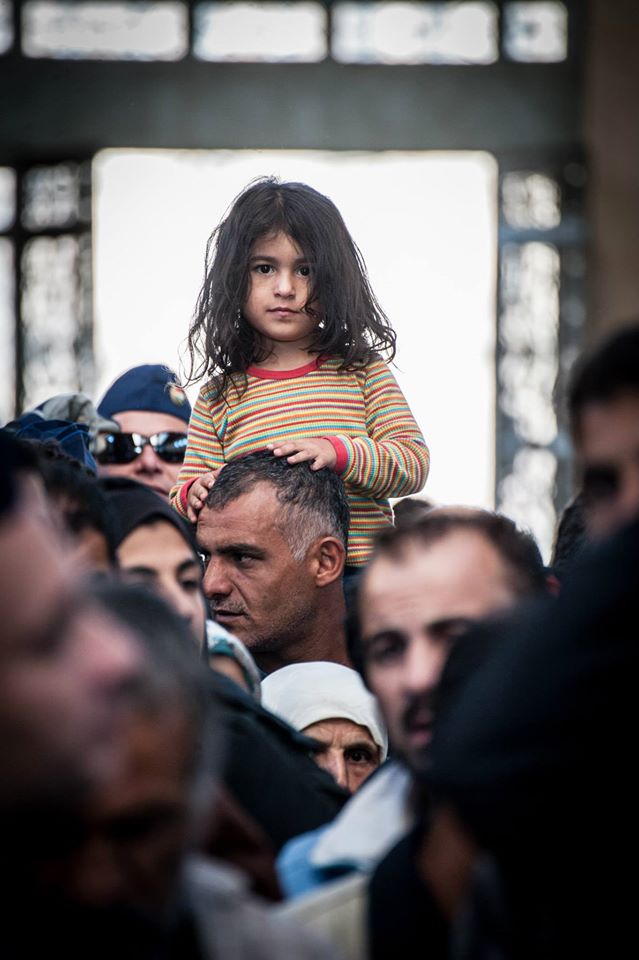In this post, Friederike Kind-Kovacs discusses the Hungarian legacy of train stations as hubs for refugees, and considers the place of children in the refugee crisis.
****
In the past month, Budapest’s Eastern train station (Keleti Pályaudvar) became an evocative symbol for the unwillingness of the Hungarian government to respond to the current refugee crisis through humanitarian means. The Hungarian government neither pursued a coherent emergency strategy nor did it provide any humanitarian relief to the thousands of asylum seekers who were stranded at Budapest’s major train station. Yet, this train station is not just a symbol of today’s refugee crisis. It also reminds us of one of Hungary’s ‘own’ past refugee crises. It was at the end of the First World War and around the time of the signing of the treaty of Trianon that Budapest’s major train stations became the emergency shelter for thousands of Hungarian refugees from the cut-off Hungarian territories. Train stations — like harbors, airports or bus stations—historically serve as urban venues of migration. Budapest’s major train station witnessed countless flows of migration. While most everyday migration happens without much notice, train stations and other nodes of migration gain only then public attention when mobility is abruptly interrupted or entirely unwanted. Then train stations turn into deadlocks of mobility that are unable to further handle the massive influx of people. This was the case both at the end of WWI and in the summer of 2015.
Hungarian Refugees after WWI
Almost a hundred years ago a great number of Hungarian refugees were stranded at Budapest’s major train stations after being expelled from the former Hungarian territories. Due to the disastrous housing situation in Budapest at the time, the refugees were housed in dysfunctional cattle cars that were standing for months and even years at the train stations. These refugees became known as the “Railway Dwellers” (Vagonlakók), whose everyday life was closely documented by photographers at the time.

As the Hungarian state was unable to stem the social and financial burden of the influx of these refugees, many railway dwellers were dependent on humanitarian help from organizations, such as Herbert Hoover’s American Relief Administration (ARA) or the American Red Cross who provided large-scale relief in post-WWI Central Europe. Most refugees and their children were eligible to receive a free lunch or a portion of milk at the ARA’s many feeding stations and obtain a new set of clothing.
The train stations in and around Budapest were also the place where humanitarian relief donations arrived, such as medical equipment, clothing or food, and were then further distributed.
![“Red Cross Relief Donation Arriving to Budapest Train Stations,” 1919.[iii]](http://www.bbk.ac.uk/reluctantinternationalists/wp-content/uploads/2015/10/DSC_1772_2-for-blog-1030x885.jpeg)
![“Child Holiday Train,” 1921.[i]](http://www.bbk.ac.uk/reluctantinternationalists/wp-content/uploads/2015/10/DSC_1867-for-blog-1030x807.jpeg)
This is even more noteworthy when we consider the role of children in the current crisis. The Hungarian government appears immune even to the plight of today’s refugee children. Although Hungary’s government highly values the role of the ‘Hungarian family’ and the value of children, it refuses to apply these principles to the newly arriving refugee families and their children. At the same time, the absurdity of Orbán’s fear of a dangerous Muslim invasion becomes apparent when meeting some of the many refugee families that arrived with their small children, babies and toddlers. The majority of these children not only have to deal with the memories of the life-threatening journey across the sea but also with trauma of war in civil-war-stricken countries like Syria.
The Current Child Refugee Crisis
The refugee and migrant crisis, as Save the Children states, has turned into a ‘Child Refugee Crisis’. The tragic image of the 3-year old Syrian-Kurd toddler Aylan Kurdi, who drowned in the sea and whose body stranded in Turkey, captures the particular vulnerability of the child in this refugee crisis. The image of this child lying “face down, his head to one side with his bottom slightly up — the way toddlers like to sleep” visualizes the defenselessness and innocence of the children. While the boy died on his travels to Europe, other “children on the move” did manage to arrive in Europe. In 2014 603 and in 2015 8420 children were counted to have arrived in Hungary without their parents; they were either by their parents alone or accidentally separated from their families, which leaves them particularly vulnerable to neglect or exploitation. Those children who arrive without their parents are transferred to the “Children’s City” in Fót, where they are kept for an extended time. During their journey or in refugee camps, children are unable to attend school and are instead often needed to contribute as breadwinners to the family’s survival, as UNICEF and Save the Children stated in a recent report.
But even when children do manage to reach Europe with their families, they can’t claim their “right to protection,” as UNICEF recently reminded some of the – rather reluctant— member countries. Before Hungary closed its border on September 15th thousands of refugee children had already reached Hungary. Yet their plight has not yet triggered any humanitarian response by the Hungarian government. Even after their arrival at Budapest’s train stations, refugee children were not considered eligible for any kind of special governmental protection or emergency relief. As early as 1924 the League of Nation’s Declaration of the Right of the Child stated that “[t]he child must be the first to receive relief in times of distress,” but then and now governments tend to see a fundamental difference between the cause of their ‘own’ and the ‘other’s’ children.
At the Budapest train stations the government has not provided adequate shelter and is not ensuring basic hygienic standards. The limited sanitary facilities do not allow parents to secure their children’s cleanliness and health; babies’ nappies are often changed on the bare floor. It happened several times that children got lost and could not find their parents. A mother even gave birth to her child at the train station, while only supported by a voluntary doctor. In response to the governmental lack of interest in the plight of refugee children, UNICEF Hungary sent on September 4th a written request to the national agencies: it was their duty to ensure that the “children receive adequate assistance and adequate protection”, and that they are welcomed in a “non-prejudiced, non-discriminatory and inclusive environment” while “temporarily or permanently residing in our country”.
Civil Activism for Refugee Children
Children’s relief at the station was entirely in the hands of non-governmental organizations, such as Migration Aid and the Let’s Help refugees in Hungary Facebook group, or individual civil activists or volunteers who did everything to meet the refugees’ most basic needs, including food, clothing information, medical care as well as practical and emotional support. With the help of the volunteers, who brought toys and sweets, the train station turned in the afternoons “into a playground” where the children started to engage in common plays.

When Migration Aid volunteers started to draw with refugee children with colorful chalk on the asphalt, as a creative means to deal with their traumas, the police reminded them that thereby the children could be made liable for the “violation of public order”. Other children were encouraged by volunteers to simply draw about their life back home, showing the “horrible experiences they endured.” Another day volunteers brought ”a brief smile to the faces” of the children, when they were setting up a projector to show “Tom and Jerry” at the train station. Little is actually needed to make the children forget their past and present reality at least for a little moment.
In contrast to this civil engagement with children, the Hungarian government tries hard to undermine and limit the population’s sympathy with the refugee families and children. Images of suffering children can convey the drama of any humanitarian crisis particularly effectively; employees of the Hungarian state television were recently told “not to broadcast images of refugee children.’ It is up to volunteers and Facebook activists, such as the photo blogger Budapest seen, to visually capture the everyday life of the refugee families and their children at the train station and thus to bridge the distance between the refugee and the receiving societies.

Memorializing Hungary’s Refugees
The political discourse about today’s refugee crisis could not differ more from the way in which Hungary’s ‘own’ past refugee crises are publicly remembered today. When it comes to the memorialization of the suffering of Hungary’s ‘own’ refugees after the “Tragedy of Trianon,” throughout the whole country Trianon memorials have been inaugurated and the 95th anniversary of the signing of Trianon, June 4th 2015, was symbolically remembered in front of the Cathédrale Saint-Louis in Versailles and used to call for the revision of the peace treaty. The so-called Trianon Museum even inaugurated on July 8th 2015 an exhibition about the “Life of the railway dwellers: an open exhibition at the Trianon museum” (Vagonlakók élete: új kiállítás nyilt a Trianon Muzeumban). Restaging one of those cattle cars where Hungarian refugees were housed, without running water, electricity or effective heating, allows the visitor to re-experience today the everyday suffering of Hungary’s ‘own’ refugees in the past. Exhibiting the disastrous social consequences of the “Hungarian exodus” from 1918-1920 perfectly fits the current trend to rewrite Hungary’s history and allows evoking feelings of compassion for refugees in the past. Yet, when facing todays’ thousands of non-Hungarian refugees and their children the Hungarian government closed its borders, introduced laws to prevent any special legal treatment of refugee children and simply watched as this situation developed into a humanitarian crisis.
Resisting Today’s Refugees
While the refugees after WWI were Hungarians and thus welcome, today’s Muslim refugees are not welcome in Hungary. “We don’t want to change,” was Victor Orbán’s recent statement, making clear that Hungary would never want to repeat Western Europe’s supposedly failed experience with multiculturalism. Instead, Orbán fuels fears about the unforeseeable consequences of this wave of Muslim immigration, namely a war of cultures, which his “old” Christian Europe would loose. Presenting himself as the savior of Europe’s Christian culture and of Hungary’s national homogeneity serves him to incite fear and hatred of Muslim immigrants. Trianon and the Holocaust could have taught him the dangers of an ongoing “quest for homogeneity.”
Hungary’s post-1956 refugee crisis could have helped the Hungarian government to see the commonalities between Hungary’s own history and today’s refugee crisis. In reaction to the government’ insensitivity, a number of civil actors, such as OSA Archivum in Budapest, have publicized images of Hungarian refugees after 1956, or even contrasted them in video footage with images of the Syrian refugees. Hungary is happy to commemorate its own refugees, but does not want to be reminded of its past dependencies on other countries. It would also be too difficult to remember that the Canadian government warned in 1956 of the “Hungarian refugees’ religion, ethnicity and tendency to political extremism” that were feared to be “incompatible with what they saw as Canadian values.” Yet, Canada overcame her ungrounded fears and accepted Hungary’s refugees.
By contrast, the Hungarian government prefers to pursue its defensive politics and safeguard its national-Christian ideals. It prefers to rather seek to protect Europe’s physical borders than its values, and denies the refugees their most basic human rights. The Hungarian government misses here the chance to realize that this is “a moment when history will look back on the world’s treatment of these refugees, just as we look back on how nations treated those fleeing the Holocaust,” as Miles Gerety recently wrote. Hungary could have chosen “a nobler path, a path of compassion and decency,” as “no democracy is weakened when it offers a helping hand to those who have learned from bitter experience the virtues of freedom.”But while the Hungarian government continues to blame Germany for its “moral imperialism,” hundreds of Hungarian volunteers and activists reaffirm their ‘moral imperative’ by turning feelings of solidarity and compassion into civil and humanitarian action.
